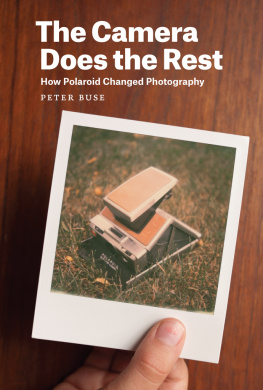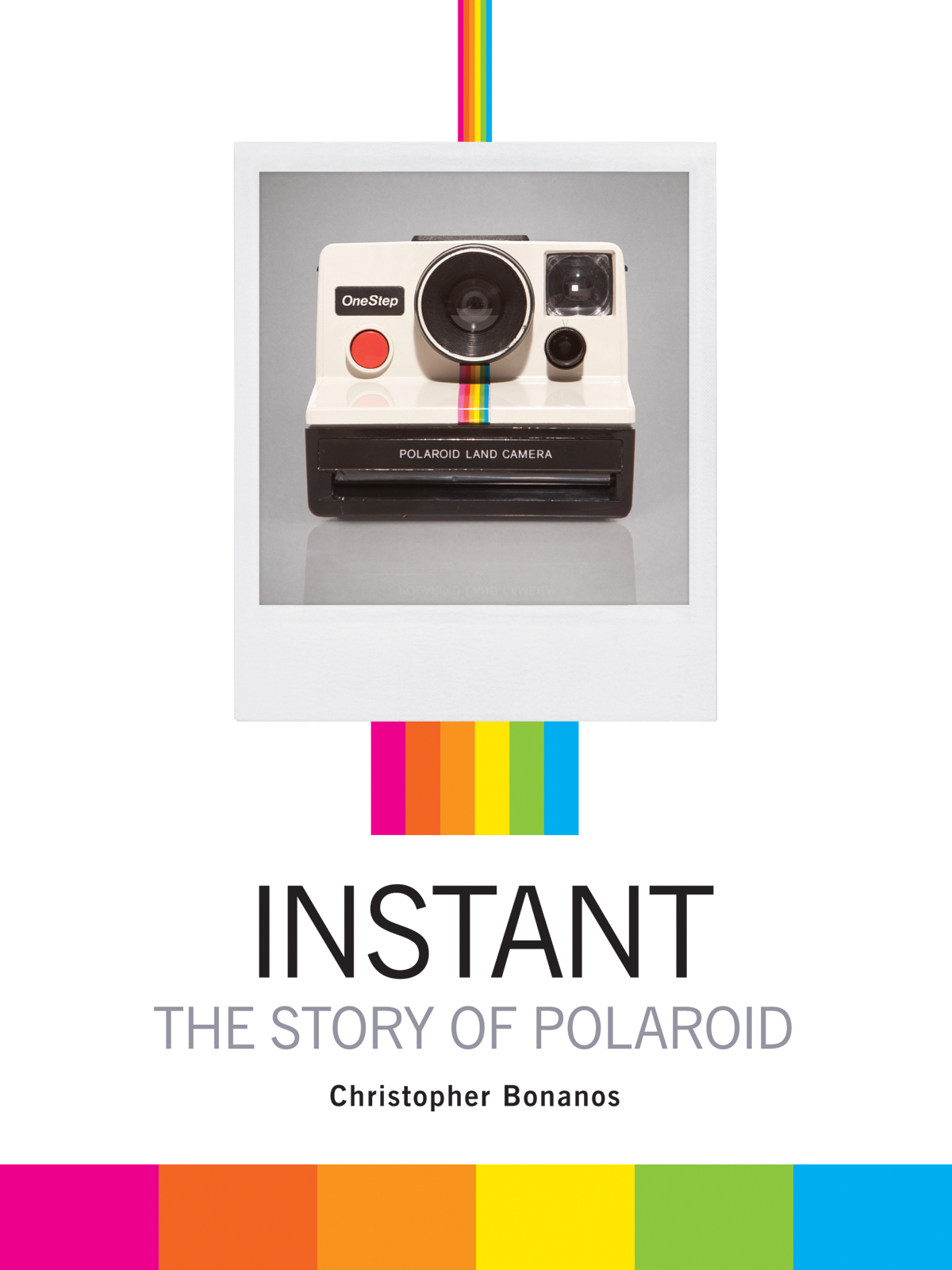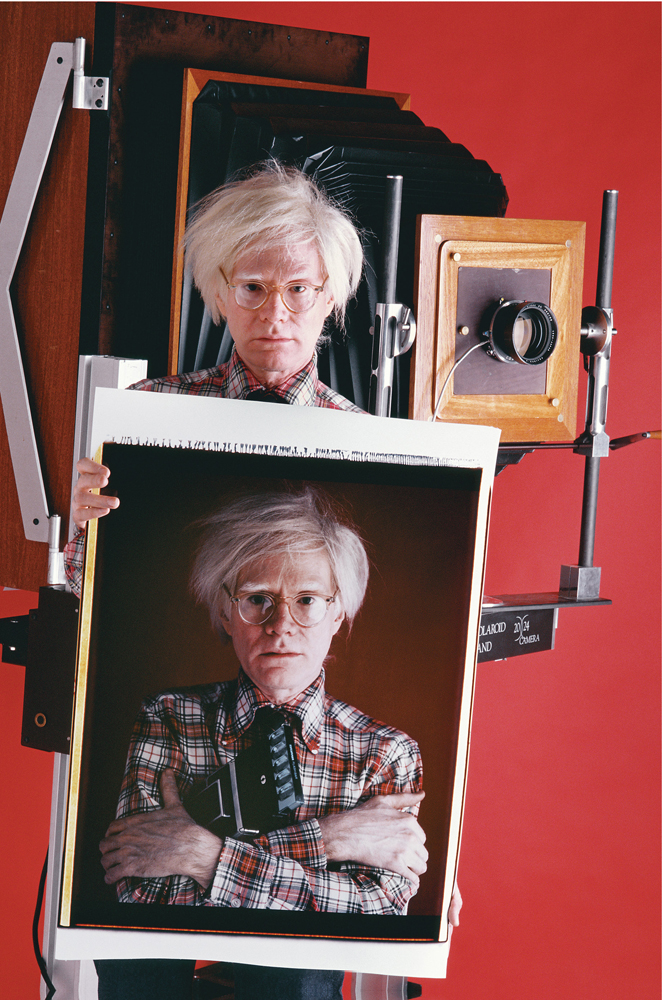

For Ellen
love without fading
Published by
Princeton Architectural Press
37 East Seventh Street
New York, New York 10003
Visit our website at www.papress.com
2012 Christopher Bonanos
All rights reserved
Printed and bound in China
15 14 13 12 4 3 2 1 First edition
Polaroid is a trademark of PLR IP Holdings, LLC, used with permission.
No part of this book may be used or reproduced in any manner without written permission from the publisher, except in the context of reviews.
FRONTISPIECE: In 1980 Andy Warhol posed before the 20x24-inch Polaroid camera, a moment after he was photographed with his (much smaller) SX-70 tucked under his arm.
Every reasonable attempt has been made to identify owners of copyright. Errors or omissions will be corrected in subsequent editions.
Editor: Dan Simon
Design: The Graphics Office
Special thanks to:
Bree Anne Apperley, Sara Bader, Janet Behning, Nicola Bednarek Brower, Fannie Bushin, Megan Carey, Carina Cha, Andrea Chlad, Russell Fernandez, Will Foster, Jan Haux, Diane Levinson, Jennifer Lippert, Gina Morrow, Felipe Hoyos, Katharine Myers, Margaret Rogalski, Elana Schlenker, Andrew Stepanian, Paul Wagner, and Joseph Weston of Princeton Architectural Press Kevin C. Lippert, publisher
Library of Congress
Cataloging-in-Publication Data
Bonanos, Christopher, 1969
Instant: the story of Polaroid / Christopher Bonanos.
p. cm.
ISBN 978-1-61689-085-8 (hardback)
ISBN 978-1-61689-158-9 (digital)
1. Polaroid Corporation. 2. Photographic industryUnited StatesHistory.
3. Photographic film industry
United StatesHistory. 4. Camera
industryUnited StatesHistory. I. Title.
HD9708.U64P653 2012
338.76814180973dc23
2012011514
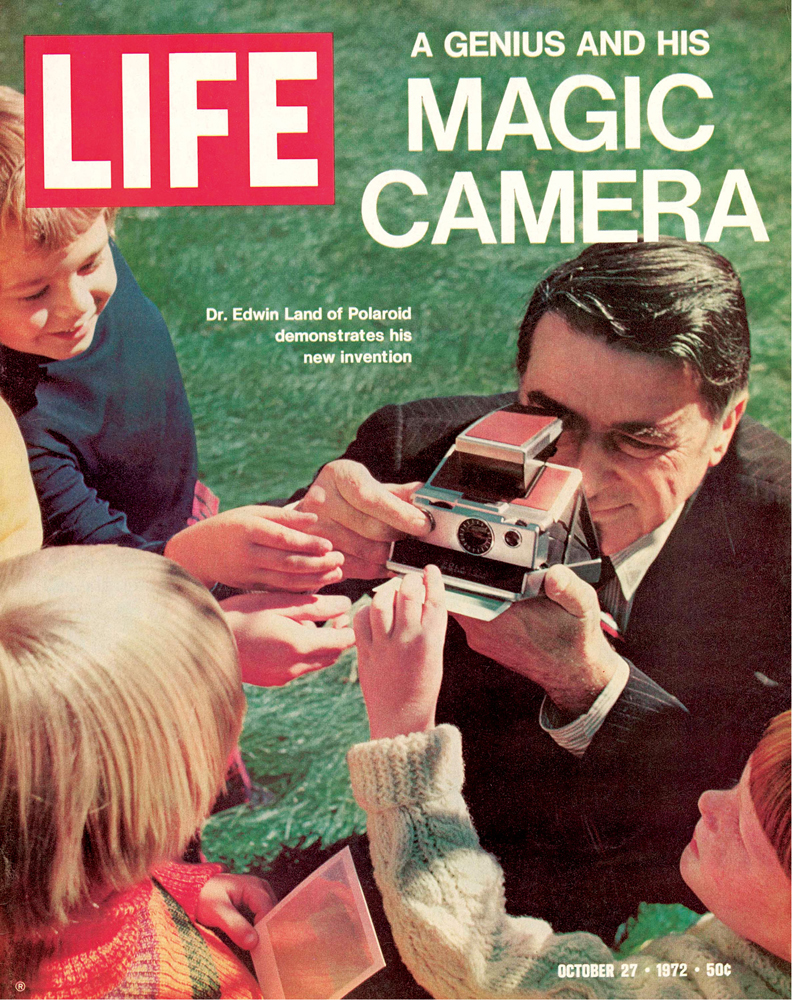
Edwin Land makes the cover of Life without showing his face.

If youre reading this, you probably know what a Polaroid picture is. Even if you werent, I probably wouldnt have to tell you. More than sixty years after instant photography made its debut, Polaroid remains one of the most recognizable coinages on Earth. As late as 2003, the hip-hop star Andre 3000 could sing Shake it like a Polaroid picture, in Outkasts megahit Hey Ya, and even young people did not have to ask what he meant. Throughout its reign over instant photographya field the company invented out of thin air and built into a $2-billion-a-year businessPolaroid had no successful competitor, no real challenge to its primacy, until almost its very end.
In the 1970s, photographers were shooting a billion Polaroid photographs each year. Now the whole business has almost vanished. Right around the year 2000, picture-taking experienced a tidal change, as digital cameras swept in and all but cornered the market. Suddenly, photographic film became a specialty item, bought chiefly by artists. Any company that depended on selling or processing film had to endure some rough years of realignment. Eastman Kodak went from its late-1980s peak of 145,000 employees to fewer than 20,000, and filed for Chapter 11 protection in 2012. Polaroid, already struggling with longstanding debt and other problems, got clobbered. Between 2001 and 2009 the company declared bankruptcy twice and was sold three times; one of those buyers went to federal prison for fraud. Polaroid film was discontinued forever in 2008.
Except that its not exactly gone. A few types of instant film are still manufactured by Fujifilm, for some older Polaroid cameras and current Fuji models. The last batches of Polaroids own film have become highly sought after, with buyers paying $40 or $50, or even more, for a pack of ten expired and increasingly unreliable exposures. A few enthusiasts have taken their analog-revival efforts to great lengths, trying to reinvent instant film anew. The newest owners of the Polaroid trademark have elaborate plans to meld instant photography with the digital age.
After all, digital pictures are instant pictures. The chief advance of Polaroid photography was that you immediately saw what you had done. If the photo was overexposed, blurry, or badly framed, you could try shooting it again, then and there. With a digital camera, you get your feedback even faster, essentially for free.
Somehow, though, digital pictures do not draw people together the way Polaroid photos did. Haul one of those old cameras out at a party, and the questions start: Heycan you still get film for that thing? Are the cameras worth money? And, once the photos start appearing, You know, that looks pretty good! I dont remember Polaroids looking like that. But, you know, we had one when I was little, and.... This gee-whiz invention of the 1940s, ubiquitous in the 1970s, ostensibly obsolete today, still exerts a weird and bewitching pull.
It wasnt just for snapshots, either. During Polaroid photographys heyday, artists like Ansel Adams and Walker Evans sang its praises. Andy Warhol, David Hockney, and Robert Mapplethorpe all shot thousands of Polaroid pictures. Most of William Wegmans famous photos of his dogs were taken on Polaroid film. He and many other artists, including Chuck Close and Mary Ellen Mark, were (and are) particularly fond of an immense and very special Polaroid camera that produces prints 20 inches wide and 24 inches high. Fewer than a dozen of these cameras were hand-built by Polaroid; five remain active; and one, in New York, is in use almost every day. No digital equipment comes even remotely close to doing what it does.
Children, in particular, react very strongly to instant pictures, whether theyre behind the camera or in front of it. Watching your own face slowly appear out of the green-gray mist of developing chemicals is a peculiar and captivating experience. The older Polaroid materials, those that develop in a little paper sandwich that is peeled apart after a few moments development, encourage a different and warm human exchange. Photographer and subject can make small talk as the picture steeps. When the print is revealed, it can be handed over as a gift or circulated around the room. There is no more social form of picture-taking.
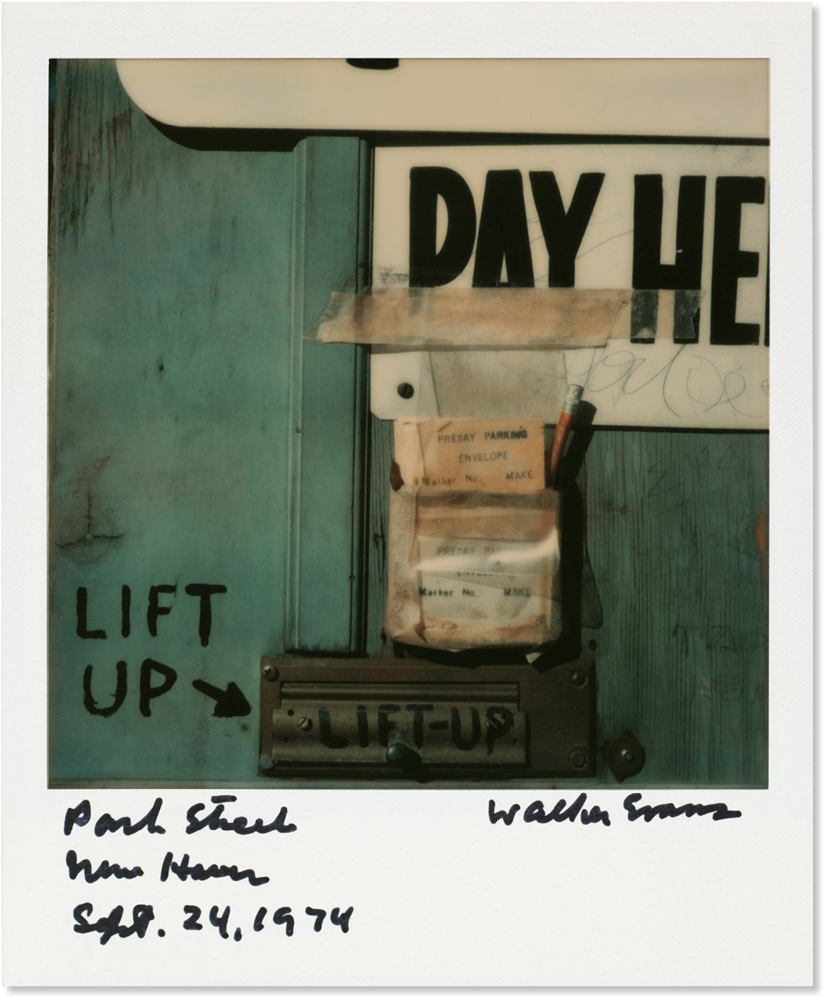
Walker Evans had stopped making photographs when SX-70 came along and allowed him a late-career burst of creativity.

Evans used the small square format to document Americana: signage, peeling paint, or a crushed beer can in a stream.
When it introduced instant photography in the late 1940s, Polaroid the corporation followed a path that has since become familiar in Silicon Valley: Tech-genius founder has a fantastic idea and finds like-minded colleagues to develop it; they pull a ridiculous number of all-nighters to do so, with as much passion for the problem-solving as for the product; venture capital and smart marketing follows; everyone gets rich, but not for the sake of getting rich. For a while, the possibilities seem limitless. Then,sometimes, the MBA s come in and mess things up, or the creators find themselves in over their heads as businesspeople, and the story ends with an unpleasant thud.










